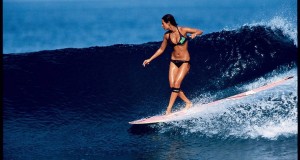
Eutrophication is a dangerous, unhealthy, and extremely unsightly state for your pond. Once a pond reaches this point, it can take years to rehabilitate it to the point that it can sustain life again.
However, in most cases a pond also takes a number of years to get to this point in the first place. So, instead of lamenting the fact that the atmosphere around your pond is deteriorating, sometime during those multiple years you should take steps to halt the process before it becomes a major detriment to your property and the aquatic ecosystem.
How Does Eutrophication Start?
The term “eutrophication” actually comes from a Greek word meaning “overfed.” This is essentially what happens to your pond when it begins its journey down the road of eutrophication. It is “overfed” to the point that it cannot handle all of the elements flowing into it, and if the trend is allowed to continue it eventually becomes eutrophic – a dead ecosystem.
Excess nutrients (especially nitrogen and phosphorous) are the root cause of this process. One of the hardest problems to overcome with this is that there are so many possible sources for these nutrients to get into your pond – fertilizers, street runoff, animal excrement, and organic debris (such as leaves) just to name a few. Oftentimes the presence of farms or golf courses nearby can result in a large influx of these nutrients into your pond.
When these nutrients are constantly flowing into your pond, you end up getting a buildup that cannot naturally be maintained by the ecosystem. This is the catalyst that begins a dangerous cycle for ponds – or really any body of water. As a result of this nutrient buildup, plant life (especially algae) begins to form in abundance. If the buildup of nutrients is severe enough, the algal blooms will cover the entire surface of the water and not allow any sunlight to penetrate the water column. This then creates a couple of consequences: 1) it prevents photosynthesis from occurring below the surface of the water, lowering the dissolved oxygen content of the water, and 2) stops oxygen transfer from occurring through surface aeration. What you get then is a body of water extremely depleted of oxygen and sunlight, which causes fish and plant life alike to suffer. When fish and plants begin to die off, decomposing bacteria use the remaining oxygen to break down the dead organic compounds. The result is a body of water covered in algae, lacking in aquatic life and oxygen, both of which are necessary to promote a healthy aquatic ecosystem.
How To Cure Eutrophication
Once a pond becomes eutrophic, it is very difficult to rehabilitate. Not only do you have to fight the nutrients that are currently running off into the pond, but you also have to undo all of the problems that have compounded over the last x number of weeks, months, years. By this point, the nutrient load has been built to astronomical proportions, and it will certainly take some time for the pond to return to the state of a balanced ecosystem.
When going about attacking a eutrophic body of water, you have to do so in a way that is really going to address the root cause of the situation. You do not want to settle for a “solution” that is just going to get rid of the algae (chemicals/algaecides). While algae is the only symptom visible to your eyes from the surface, it is not the actual problem – it’s the nutrients, in case you skimmed ahead and missed that.
The most efficient way for these nutrients to be broken down is with the natural, aerobic bacteria in the water column. However, in order for these bacteria to work to their full potential, they need an adequate oxygen supply. If you are seeing large algal blooms, then you probably do not have the amount of oxygen that the bacteria need. You can also use environmentally friendly supplemental bacteria known as Pond Pro-Biotic.
The best way to go about obtaining this oxygen for your pond is through a diffused aeration system. This type of system releases air at the bottom of the pond, so that the bubbles rise and touch every part of the water column, increasing oxygen transfer. Some are obviously more effective than others, but when fighting eutrophication, anything is better than nothing.
What is important to understand is that the original reason that the pond is suffering is because it does not have enough oxygen to handle its nutrients. Just like on land, no oxygen means no life, and no life means a stagnant, dead ecosystem.
Stopping Eutrophication
The fact that I’ve described this as a bit of a daunting task is not an excuse to ignore the problem further. Instead, it’s motivation to do something about it now instead of waiting any longer. Eutrophication is a chronic problem throughout the world’s watersheds that is having great consequences in terms of water quality and aquatic life.
This problem starts with nutrient-filled smaller ponds that dump into other ponds, lakes, or rivers, and then eventually the watershed – sometimes the ocean, other times larger lakes or bays. The way to stop this problem is to provide all of these water bodies with an ample oxygen supply so that the natural bacteria can take care of the nutrients as they run into the pond, instead of working from behind all the time. Subdivisions or Homeowners Associations with stormwater retention ponds should look to aerate from the start, instead of waiting until some undefined time down the road. This will create healthy ecosystems from the beginning, and set a precedent for the pond so that it will be able to take care of any nutrients before they begin to cause problems that could eventually lead to eutrophication.

Source by Tim LaBarge
 Vitamin Agent The Health & Naturalistic Source
Vitamin Agent The Health & Naturalistic Source


